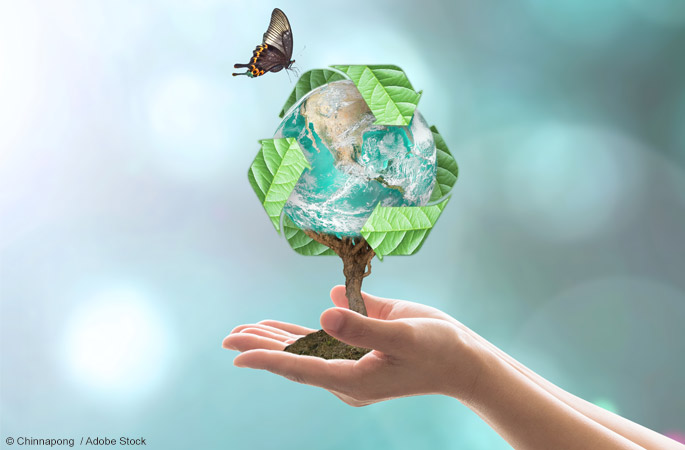The year 2017 ushered in a new era in how to help the environment by recycling and how we manage environmental degradation and climate change, an era that requires the utmost personal responsibility from each of us. Without government commitment to the programs we relied on, it’s up to us. Maybe it always was since no program can succeed without the commitment and engagement of citizens, many citizens, each citizen.
Recycling is one way each of us contributes to saving our beautiful planet. This seemingly small act is huge when we all participate. Designated recycling bins picked up directly from your home or business make caring for our planet and the people on it easy for you. How do recycling bins and trash cans help the environment? Here are five ways your recycling program impacts the planet positively:
- Reduce landfill waste. In 2014, the U.S. generated about 258 million tons of Municipal Solid Waste (MSW). Of that 258 million tons, 136 million tons of waste went to landfills. This means each person in the U.S., population 326,625,791, sent almost 832 pounds of waste to a landfill each year — more than 2-1/4 pounds per person per day. Landfills contribute to major problems including water pollution, air pollution, and climate change. Despite careful engineering, landfills leak liquids into the groundwater. Landfills also emit hazardous contaminated air from landfill biodegradation, and these emissions are hazardous to health.
- Help the Arctic by reducing plastic waste. A paper released in 2017 in Science Advances reports that roughly 300 billion pieces of floating plastic clog the Arctic Ocean. This devastating situation impacts the marine ecosystem adversely. Cleanup is a formidable if not impossible task, and this mess has accumulated in just a few short decades. Reducing use of plastic, repurposing it and recycling it are imperative measures to stop the damage.
- Reduce methane gas production. Landfills generate methane as waste decomposes, one-fourth of all methane. Landfills are the third largest source of methane emissions in the United States, and methane gas is the most dangerous of the greenhouse gasses for climate change. Reducing input to landfills by 1 pound per day per person dramatically impacts the equation.
- Conserve natural resources. Natural resources become more precious as our population grows. Natural resources include both renewables and non-renewables. When non-renewables end up in landfills, they waste our limited supply and contribute to global climate change. Non-renewables are involved in more significant ways with landfills, though, and that is in the process that gets waste to the landfill. “Trucks and trains used to move waste all create diesel exhaust, which contains nearly 40 toxic substances.” These non-renewable resources add to air pollution. There is another aspect to conserving natural resources, though, and that is in thinking through each purchase, how we will use it and how we will dispose of it when its usefulness ends. This thought process starts with how products are made, hopefully with recycled — and recyclable — material.
- Save energy. All products have a life cycle. Transportation to a landfill and processing uses significant energy. Some of that energy use can be offset with energy recovery from waste, converting non-recyclable waste materials into useable heat, electricity, or fuel. It’s better yet to avoid the energy expenditure.
Helping the environment by using recycling bins and reducing the waste you produce that goes to a landfill is an important and necessary contribution each of us makes to save our environment.





































































































































 Three Ways to Engage Teams and Clients to Maximize Your Recycling Program Engagement
Three Ways to Engage Teams and Clients to Maximize Your Recycling Program Engagement  How to Integrate Accessibility Into Your Sustainability Planning
How to Integrate Accessibility Into Your Sustainability Planning  Why Park Benches Can Promote Workplace Well-Being
Why Park Benches Can Promote Workplace Well-Being 

Thanks for your tip to recycle because it is friendly to the earth. I like how you said that it can help everyone who lives on the planet have healthier lives and that it is all of our responsibilities. My husband and I are always looking into ways in which we can recycle. We are looking to recycle diesel filters now because we heard you can do that.